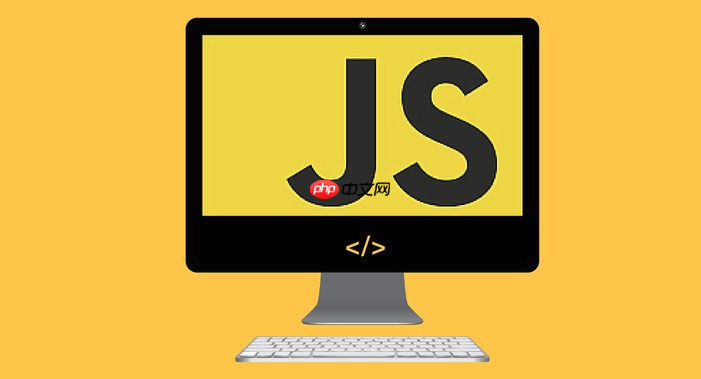在javascript中处理多个异步条件顺序判断的最佳方式是使用promise链或async/await。1. promise链通过.then()依次执行每个异步条件,并可在每个步骤中进行判断和短路操作,但代码较长且容易嵌套过深;2. async/await则以更直观、同步化的方式编写异步逻辑,提升可读性和维护性;3. 为避免promise链过长,可拆分逻辑为独立函数、使用async/await、良好命名及借助工具库优化;4. 错误处理可通过.catch()统一捕获或在async函数中使用try/catch结构化处理;5. 若条件无依赖关系,可用promise.all()并行执行以提升性能,同时注意负载与缓存策略的权衡。这些方法共同确保了异步流程的清晰、健壮与高效。

在JavaScript中,多个异步条件顺序判断的核心在于利用Promise链或async/await来确保每个条件都完成之后再进行下一个判断。直接用if/else嵌套会陷入回调地狱,可读性和维护性都很差。

解决方案:

使用Promise链或async/await,前者需要更仔细地处理Promise的状态,后者则更接近同步代码的写法,更容易理解。以下分别给出示例:

Promise链:
function asyncCondition1() {
return new Promise(resolve => {
setTimeout(() => {
const result = Math.random() > 0.5; // 模拟异步条件
console.log("Condition 1:", result);
resolve(result);
}, 500);
});
}
function asyncCondition2(result1) {
return new Promise(resolve => {
setTimeout(() => {
const result = result1 && (Math.random() > 0.3); // 依赖第一个条件的结果
console.log("Condition 2:", result);
resolve(result);
}, 500);
});
}
function asyncCondition3(result2) {
return new Promise(resolve => {
setTimeout(() => {
const result = result2 && (Math.random() > 0.7); // 依赖第二个条件的结果
console.log("Condition 3:", result);
resolve(result);
}, 500);
});
}
asyncCondition1()
.then(result1 => {
if (result1) {
return asyncCondition2(result1);
} else {
console.log("Condition 1 failed, skipping Condition 2 and 3");
return Promise.resolve(false); // 短路后续的Promise
}
})
.then(result2 => {
if (result2) {
return asyncCondition3(result2);
} else {
console.log("Condition 2 failed, skipping Condition 3");
return Promise.resolve(false); // 短路后续的Promise
}
})
.then(finalResult => {
if (finalResult) {
console.log("All conditions passed!");
} else {
console.log("One or more conditions failed.");
}
})
.catch(error => {
console.error("An error occurred:", error);
});async/await:
async function checkConditions() {
try {
const result1 = await asyncCondition1();
if (!result1) {
console.log("Condition 1 failed, exiting.");
return;
}
const result2 = await asyncCondition2(result1);
if (!result2) {
console.log("Condition 2 failed, exiting.");
return;
}
const result3 = await asyncCondition3(result2);
if (!result3) {
console.log("Condition 3 failed, exiting.");
return;
}
console.log("All conditions passed!");
} catch (error) {
console.error("An error occurred:", error);
}
}
checkConditions();如何避免Promise链过长导致的可读性问题?
Promise链过长确实会降低代码的可读性。可以考虑将Promise链拆分成更小的、逻辑独立的函数,每个函数负责一小部分逻辑,然后再将这些函数组合起来。 另一种方法是使用async/await,它允许你以更线性的方式编写异步代码,避免了深层嵌套的Promise链。例如,可以将多个.then()调用合并到一个async函数中。 此外,良好的命名也很重要。给每个Promise函数或async函数取一个清晰、描述性的名字,可以帮助你更好地理解代码的意图。 还可以使用一些工具库,如Bluebird.js,它提供了一些额外的Promise操作符,可以简化Promise链的编写。
如何处理异步条件中的错误?
在Promise链中,可以使用.catch()方法来捕获任何地方抛出的错误。 最好在Promise链的末尾添加一个.catch(),以确保所有未处理的错误都被捕获。 如果需要在特定的Promise中处理错误,可以在该Promise之后立即添加一个.catch()。
在使用async/await时,可以使用try/catch块来捕获错误。 将可能抛出错误的代码放在try块中,然后在catch块中处理错误。 也可以在async函数外部添加一个全局的错误处理机制,例如使用window.onerror或process.on('uncaughtException')来捕获未处理的错误。
如何优化多个异步条件的性能?
如果多个异步条件之间没有依赖关系,可以并行执行这些条件,而不是顺序执行。可以使用Promise.all()或Promise.allSettled()来并行执行多个Promise,并在所有Promise都完成后获取结果。 这样可以显著提高性能,尤其是在异步操作耗时较长的情况下。 但要注意,并行执行可能会增加服务器的负载,因此需要根据实际情况进行权衡。 此外,还可以使用缓存来避免重复执行相同的异步操作。如果某个异步条件的结果在一段时间内不会发生变化,可以将结果缓存起来,下次直接从缓存中获取,而无需再次执行异步操作。
以上就是js中多个异步条件怎么顺序判断的详细内容,更多请关注php中文网其它相关文章!

每个人都需要一台速度更快、更稳定的 PC。随着时间的推移,垃圾文件、旧注册表数据和不必要的后台进程会占用资源并降低性能。幸运的是,许多工具可以让 Windows 保持平稳运行。

Copyright 2014-2025 https://www.php.cn/ All Rights Reserved | php.cn | 湘ICP备2023035733号